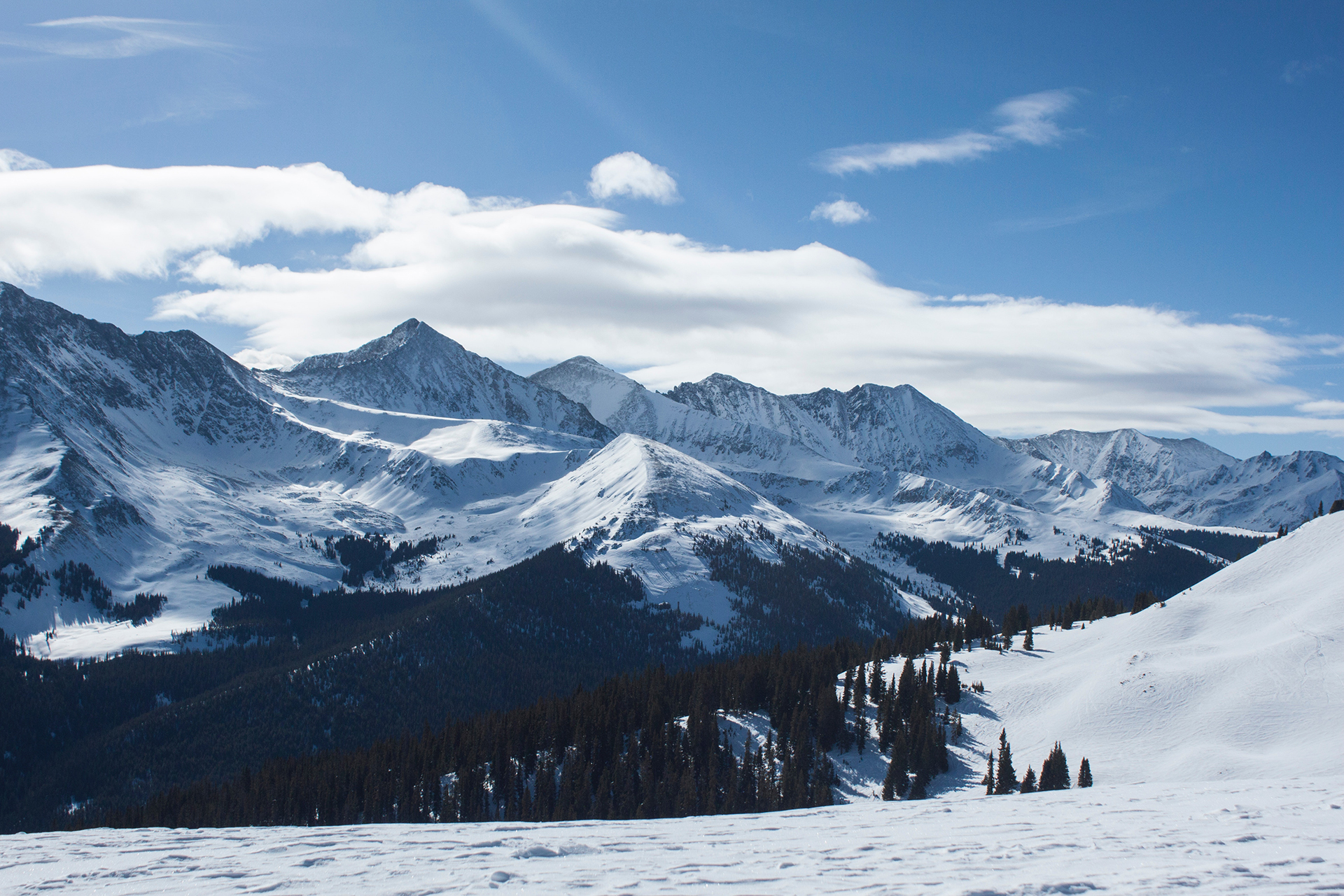Israel trip and Jesus’ sites
What place is now held in greater contempt than Jerusalem, inhabited and oppressed by infidels? Yet whoever goes to Jerusalem will meet with the same graces and indulgences as before... Whoever goes there out of love and with a perfect intention will share in the same grace and blessing that the city had in the time of its glory, because of the faith of the pilgrims and their labor of love (Jesus said to Saint Bridget in 1360).
Where are the Catholic sites in Israel? I will mark them on a map. When I travelled there in 2018, I skipped a few locations mentioned because I was not comfortable travelling to those sites.

From Tel Aviv airport to Jerusalem, take the 485 bus (16 shekels). In Jerusalem, all within walking distance, we have on the Southside: the Cenacle (Pentecost and Last Supper), the Dormition (where Mary passed away), Saint Peter in Gallicantu (Peter's denial and Caiphas prison of Jesus), and the Pool of Siloam (I skipped). Inside Jerusalem, we have the Church of the Holy Sepulchre (Jesus' Crucifixion and Tomb), the Via Dolorosa and its 14 stations, starting at the Church of the Condemnation, Pools of Bethesda. On the east side (Arab side, crossing the Lions' gate) we have Gethsemane and its Grotto, Chapel of the Ascension, Mary's Tomb (Saint Anne, Joachim, and Saint Joseph tombs as well), Pater Noster Church (I skipped), and Dominus Flevit Church. More distant East, Bethpage, and Lazarus tomb (only accessible by the 236 Arab bus, I skipped these two sites).

West of Jerusalem in Mount Herzl, accessible by light train, we have the Church of the Visitation (Elizabeth home), Church of Saint John the Baptist (where he was born), Mary’s well. We need to walk about 15 blocks from the train station through the most beautiful landscape (walk back by the trail in the valley to the light-rail station). Download MapMe as an offline GPS for your phone. It is very helpful.

Ten kilometres south of Jerusalem, we have Bethlehem. The 321 Arab bus in Jerusalem will go to Bethlehem in 40 minutes (outside the Damascus Gate), bring your passport because they will check it on the bus on the way back . Milk Grotto, Nativity Church within walking distance, and Shepherd’s Field farther out (I skipped the field).

[Let God the Father speak:] So whoever comes to that place where Mary was born and reared [Nazareth] will not only be cleansed but will become a vessel for my honor...The second place is Bethlehem where my Son was born like a lion....The third place is Calvary where my Son was wounded and died like an innocent lamb according to his human nature, but remained impassible and immortal according to his divine nature...The fourth place was the garden where my Son's grave was...The fifth place was the Mount of Olives from which my Son flew in his human nature like an eagle to heaven where he ever was according to his divine nature...Therefore, whoever comes clean and with a good and perfect intention to these places will see and taste the sweetness and goodness of me, God...And when you come to these places I will show you more. [Saint Bridget, 1360]
Jericho (Jesus 40 days of fasting) and Jesus' baptismal site, at the Jordan River, are accessible by taxi or bus if you feel more at ease in Israel (1 hour away from Jerusalem), I skipped both places.
In the northern part of Israel (Sea of Galilee), we have more sites that are Christian.
Explained below by bus connections from Jerusalem that may save you time and money:
From Jerusalem to Galilee by public bus (US$30 total):
(1) 953 @6230am (Jerusalem central station), 810am arriving at Afula, 36 shekels.
(2) 541 @820am, 20 shekels, passing next to Mount Tabor (I chose not to climb it, skipped), arriving at Mount Beatitudes Church at 920am, walking distance to Primacy of Peter Church by trail and the Multiplication Church, then to Capernaum, 20 minutes away by a paved path to Saint Peter’s Home.
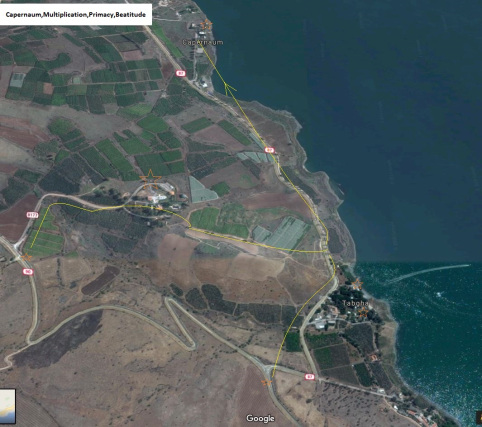
(3) Back to Tiberias bus station by bus 541 or other (or taxi 40 shekels). Then 2:30 pm to Cana by 431 bus (20 minutes), to visit the Wedding Church of Cana.
(4) Cana to Nazareth by 22/27/26 bus (15 minutes), 15 shekels. Nazareth has the Basilica of the Annunciation, Saint Joseph’s Church, and Mary’s Well.
(5)354,356 bus back to Afula from Nazareth at the roundabout, 10 shekels.
(6)953 at Afula back to Jerusalem (@5:10 pm or 6:30 pm), 36 shekels.
Kursi (Jesus' Miracle of the Swine) on the East side of the Sea of Galilee is accessible by car (I skipped it).
FYI, Friday at 6 pm- All Saturday Israel has no buses or stores open. There are more Christian sites, but you can cover, the ones mentioned, on your own, without a tour as just described. The photo below is between Mount Zion and the West Bank in Southern Jerusalem. A glimpse of the valleys surrounding Jerusalem 2000 years ago (probably what the Mount of Olives, Gethsemane, East of Jerusalem, must have looked like before so much construction). Notice the natural cave on the rock formation. The pool of Siloam is not far away. Israel has indescribable beauty. It’s very hard to leave the country, and you will want to come back.
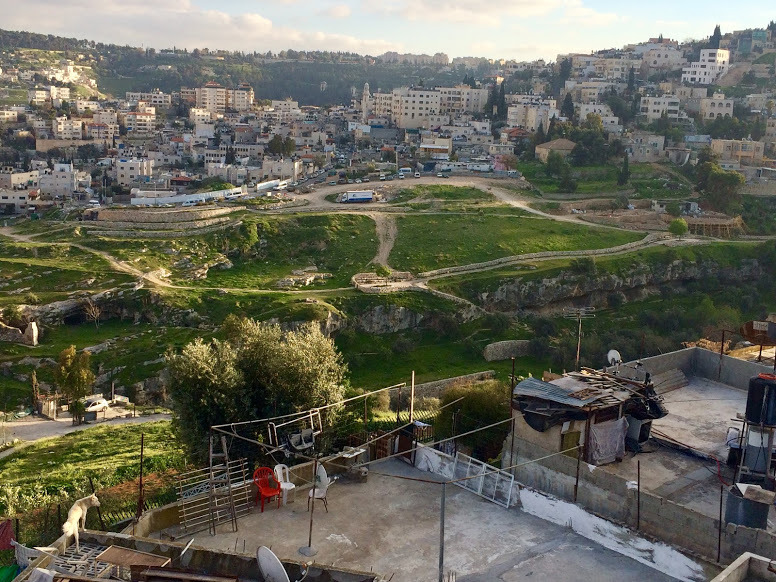
Historically, the above photo is of Hinnom Valley. According to Emmerich, this South valley was used as a garbage landfill in first-century Jerusalem. Judas hanged himself there after betraying Jesus,
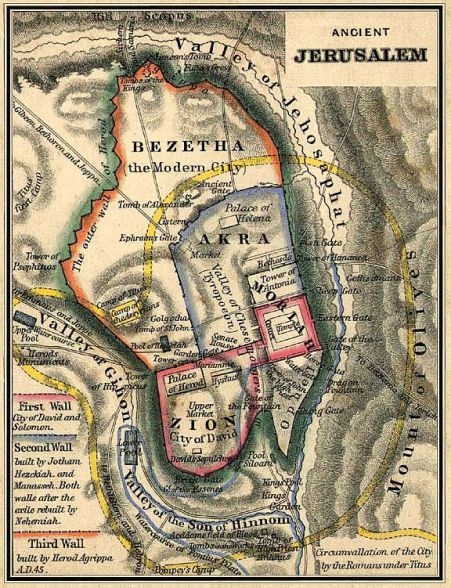
A modern photo,

Practical advice for public bus riders in Israel: first get an anonymous Rav-Kav card from the driver (5 shekels), add 50 shekels cash to it (he will add an extra 20% more as a gift), then tell the driver to take the fare from the Rav-Kav (1 card can be used for the whole family). On the Jerusalem light train, RavKav can only be used for 1 person, 1 swipe, everything else is for multiple people. It will save you money if you travel by bus. Recharge it at any machine with the RavKav logo with a credit card (an extra 20% as a gift).
Book: Jesus: A Pilgrimage by Martin, James
Let us enumerate Israel’s sites above according to the New Testament Gospels and timeline:
- Basilica of the Annunciation, Saint Joseph’s Church and Mary’s Well (Luke:1:26-38)
- Church of the Visitation (Luke:1:39-56)
- Church of Saint John the Baptist (Luke:1:57-63)
- Nativity Church (Luke:2:1-18)
- Shepherd’s field (Luke:2:18-20)
- Milk Grotto (Matthew:2:16)
- Wedding Church of Cana (John:2:1-12)
- Jesus' baptismal site (Matthew:3:13-17)
- Jericho (Luke:4:1-13)
- Sea of Galilee (Mark:4:35-41)

- Mount of Beatitudes (Matthew:5:1-12)
- Kursi (Matthew:8:28-34)
- Multiplication Church (Matthew:15:32-39)
- Mount Tabor (Matthew:17:1-8)
- Saint Peter’s Home (Matthew:8:14-17)
- Pater Noster Church (Matthew:6:9-13)
- Dominus Flevit Church (Luke:19:41-44)
- Pools of Bethesda (John:5:1-18)
- The Pool of Siloam (John:9:1-11)
- Lazarus tomb (John:11:1-44)
- Bethpage (John:12:14-15)
- Cenacle (Matthew:26:17-30)
- Gethsemane (Matthew:26:36-46)
- Saint Peter in Gallicantu (Luke:22:54-62)
- Church of the Condemnation (John:19:1)
- Via Dolorosa (Mark:15:16-21)
- Church of the Holy Sepulchre (Matthew:27:32-56)
- The Primacy of Saint Peter Church (John:21:15-19)
- Chapel of the Ascension (Matthew:28:18-20)
- Cenacle (John:20:19-31)
- Dormition (Mary of Agreda, Coronation)
- Mary’s tomb (Mary of Agreda, Coronation)

Jesus' crucifixion, Golgotha.
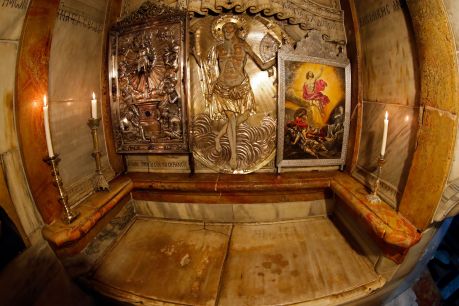
Jesus' Resurrection tomb
[Jesus speaks:] When you people entered my temple [Church of the Holy Sepulchre, Jerusalem], which was dedicated with my blood, you were as cleansed of all your sins as if you had at that moment been lifted from the font of baptism. And because of your labors and devotion, some souls of your relatives that were in purgatory have this day been liberated and have entered into heaven in my glory. For all who come to this place with a perfect will to amend their lives in accord with their better conscience, and who are not willing to fall back into their former sins, will have all their former sins completely forgiven; and they will have an increase of grace to make progress. [Saint Bridget, 1360]
First-century Jerusalem walls can be more or less traced in aerial photos, and from them, it makes sense to have Golgotha outside the protecting walls and gate entrance to make a show of criminals. Golgotha can also be seen slightly raised.
A Venus temple was built over Golgotha in Roman times. The Church of the Holy Sepulchre was restored to its original location...
At the Sea of Galilee, we uncover much of the New Testament...

Let us look with more detail at one of the most important times in human history, the Annunciation:
Nazareth's topography puts Mary’s house either facing south or east.

I like being east-facing because the water well is closer. Also, because of the studied blueprint from 1917, where Loreto’s Holy House dimensions match Nazareth’s original foundation.

Blueprint of the Holy House and Grotto
This means Jesus' room is closer to the main east door, with no windows. As expected, the man protects the only entrance into the home. Mary's room is at the far back with a small window.
The Archangel Gabriel appeared to Mary at the right of the back window (closer to the grotto) and Mary was at the east entrance, right side (closer to the grotto) at the Annunciation. Mary was also born in this Holy House (now in Loreto, Italy). Because Christians were buried in the proximity of Golgotha, it is expected by tradition to find tombs around Mary's room too.
In Jerusalem, as I touched Mary’s Dormition statue where she passed away (below the Cenacle) with my rosary, on the side of her head with a stretched right arm, an overwhelming feeling of unworthiness came over me on contact. I am still discerning that feeling and going to confession as much as possible.

There are many other places in Israel to venture to and discover, even virtually. For example, the book Catena Aurea by Aquinas (1250ac) wrote about John the Baptist:
Raban., Antiq. xviii, 5: Josephus relates, that John was sent bound to the castle of Mecheron, and there beheaded; but ecclesiastical history relates that he was buried in Sebastia, a town of Palestine, which was formerly called Samaria.
We can search YouTube for a video of Sebastia, in search of John's burial site. We got one! ...
